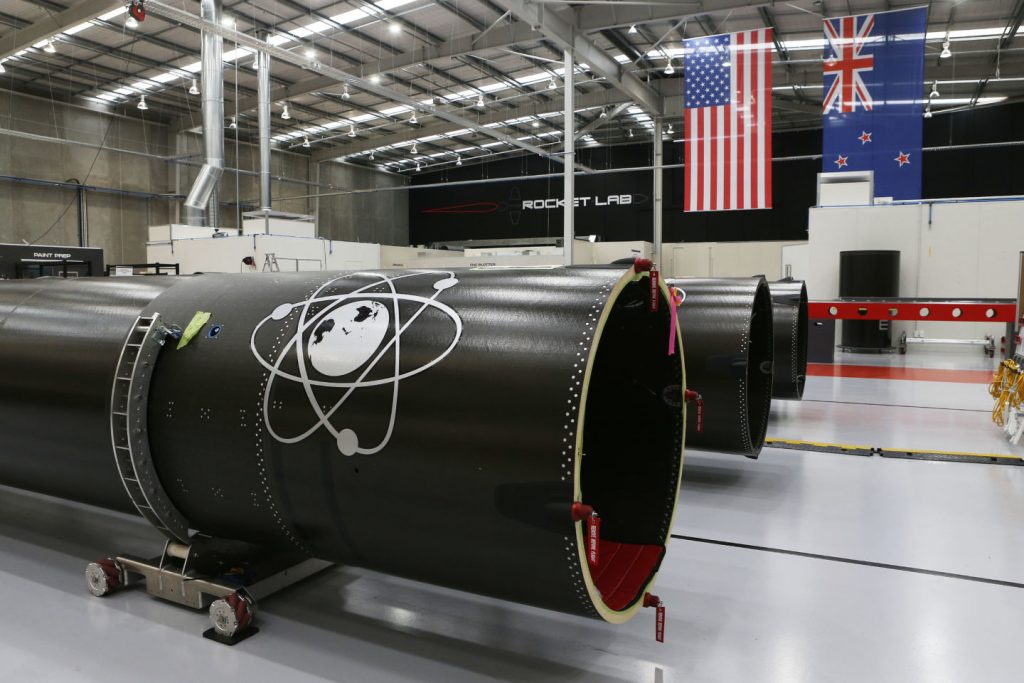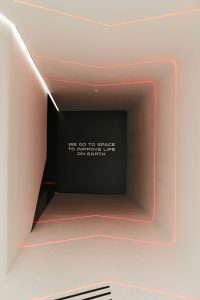
Rocket Lab New Premesis Imagery, Auckland, 11 October 2018. [Image: William Booth / www.photosport.nz]
“For us, the first big step was getting to orbit,” said Rocket Lab CEO Peter Beck. “We succeeded with that. The next big step is scaling facilities to meet demand. We’re not focusing on the next rocket. We’re focusing on the next 100 rockets.”

Rocket Lab New Premesis Imagery, Auckland, 11 October 2018. [Image: William Booth / www.photosport.nz]
Rocket Lab will continue to build its 3D printed Rutherford engines, as well as electronic guidance systems, at its main production facility in Southern California. The new Auckland facility will focus on building fuel tanks and rocket cores. Rockets launching from New Zealand will eventually be integrated at facilities there, and rockets launching from Virginia will be integrated there. Rocket Lab won’t be shipping entire Electron boosters across the ocean, but it will be sending components, and the two facilities combined will allow the company to build up to 52 Electron rockets per year, launching once per week.
Rocket Lab plans to invest about $20 million into the new facility at Wallops, which will be located at the Mid-Atlantic Regional Spaceport. According to Beck, the company is looking at additional sites around the world as well.
The Electron rocket has a payload of 150kg to 225kg, and is boostable to a 500km sun-synchronous orbit. Rocket Lab faces stiff competition from a large number of other companies looking to deliver small payloads into outer space, but Beck believes that the company has an advantage from all that it has learned: that things like regulation, production facilities, and launch pads matter just as much if not more than the rocket itself.
“This is the thing,” he said. “It’s one thing to have a couple of hot fires and do a couple of suborbital launches and whatnot. For us, just going to orbit was a good milestone, but going to orbit once is just the start. The amount of effort that we’ve invested the last nine months, really, it’s been just extraordinary.”

Rocket Lab New Premises Imagery, Auckland, 11 October 2018. [Image: William Booth / www.photosport.nz]
Subscribe to Our Email Newsletter
Stay up-to-date on all the latest news from the 3D printing industry and receive information and offers from third party vendors.
You May Also Like
3D Printing Unpeeled: New Arkema Material for HP, Saddle and Macro MEMS
A new Arkema material for MJF is said to reduce costs per part by up to 25% and have an 85% reusability ratio. HP 3D HR PA 12 S has been...
3D Printing News Briefs, January 20, 2024: FDM, LPBF, Underwater 3D Printer, Racing, & More
We’re starting off with a process certification in today’s 3D Printing News Briefs, and then moving on to research about solute trapping, laser powder bed fusion, and then moving on...
3D Printing Webinar and Event Roundup: December 3, 2023
We’ve got plenty of events and webinars coming up for you this week! Quickparts is having a Manufacturing Roadshow, America Makes is holding a Member Town Hall, Stratafest makes two...
Formnext 2023 Day Three: Slam Dunk
I’m high—high on trade show. I’ve met numerous new faces and reconnected with old friends, creating an absolutely wonderful atmosphere. The excitement is palpable over several emerging developments. The high...































